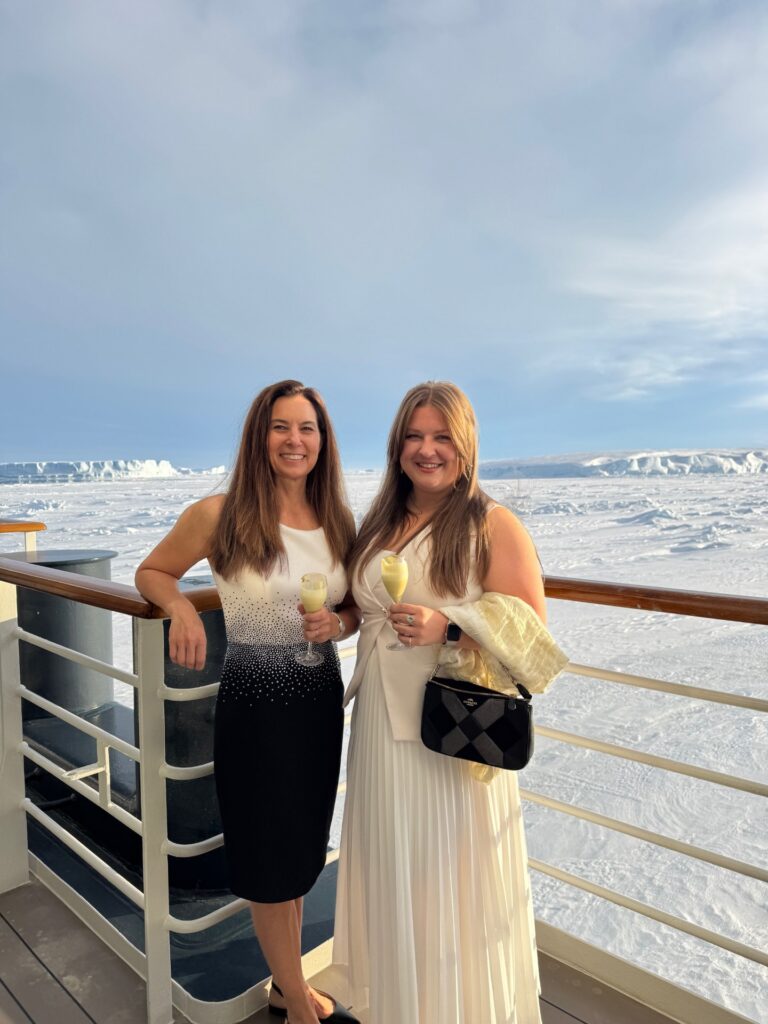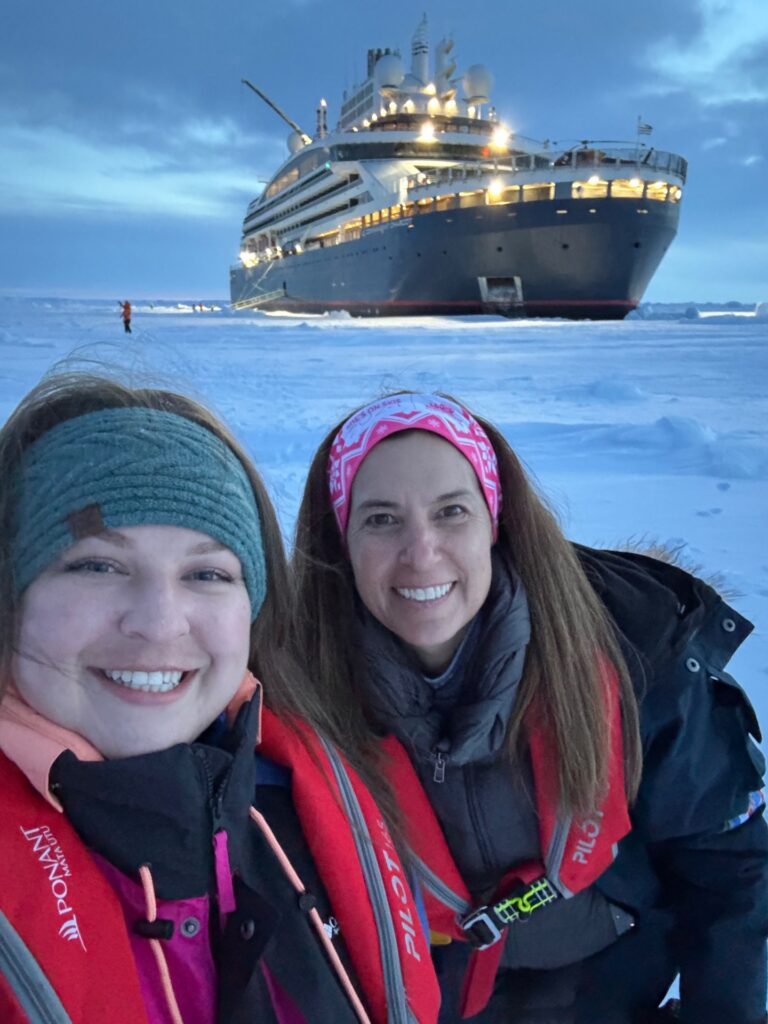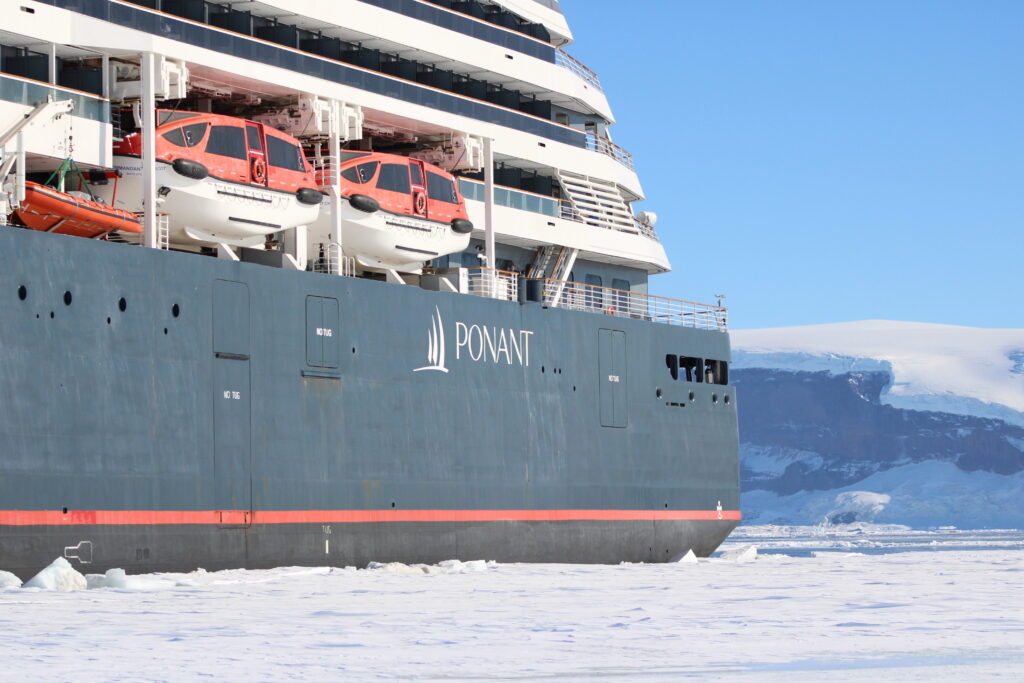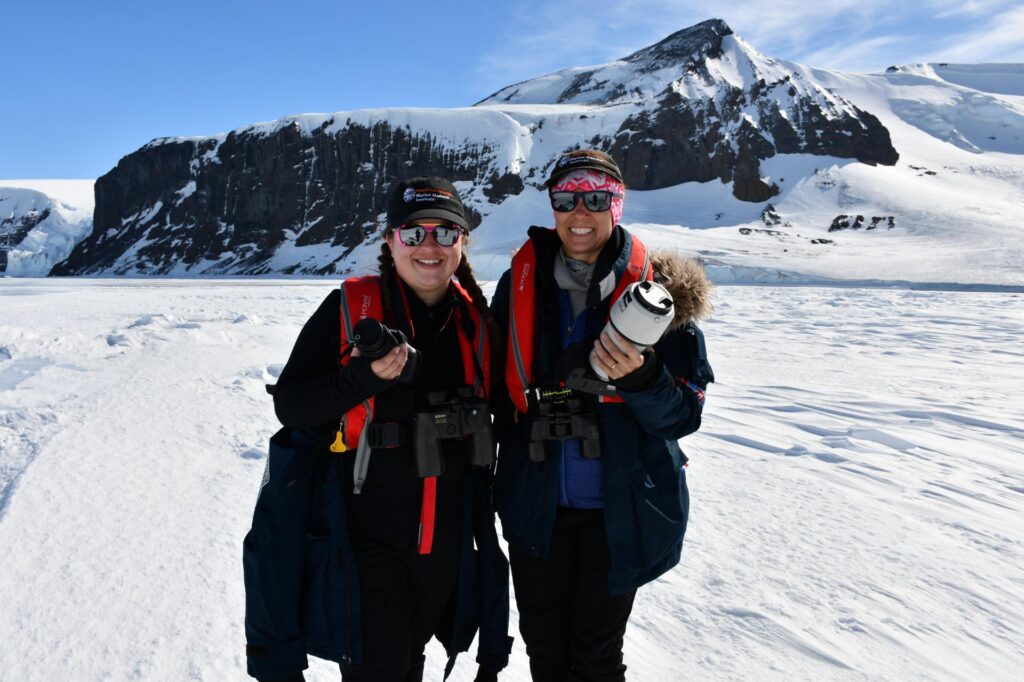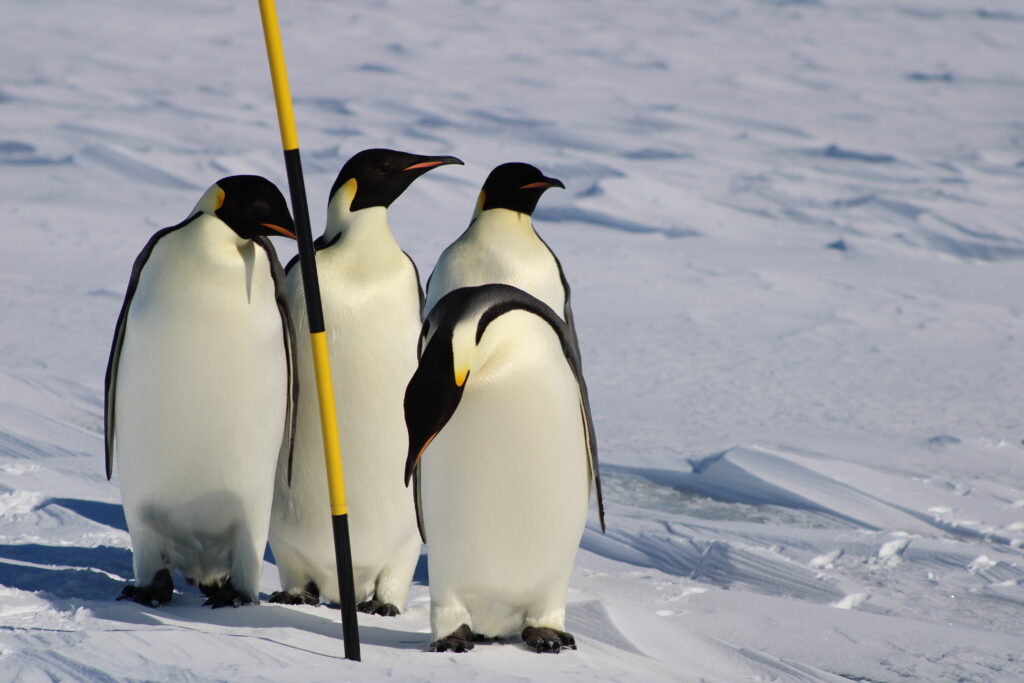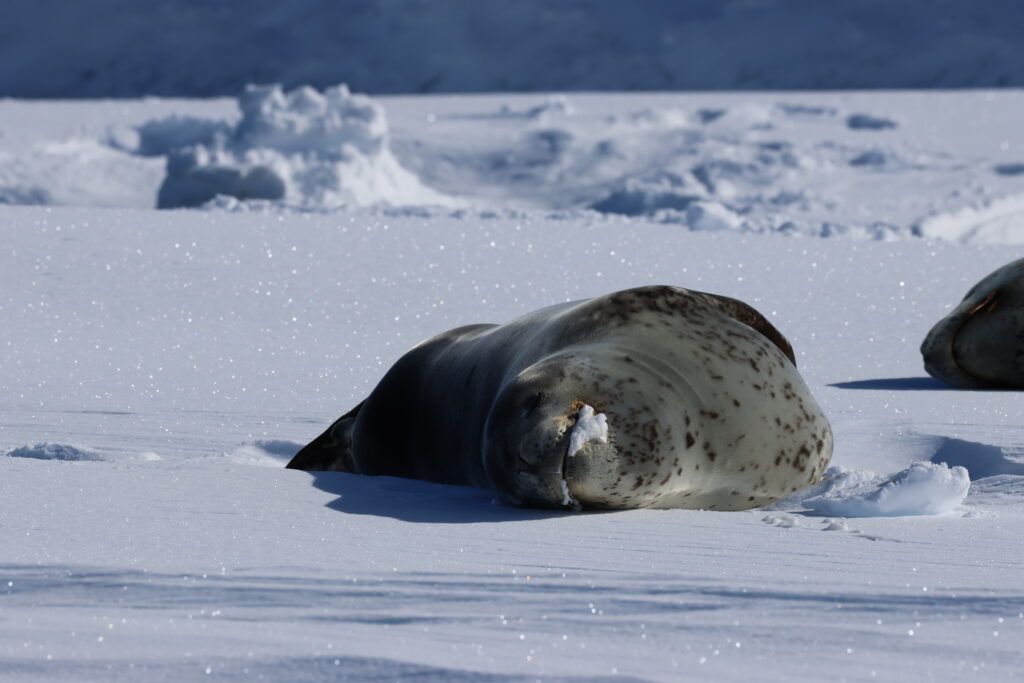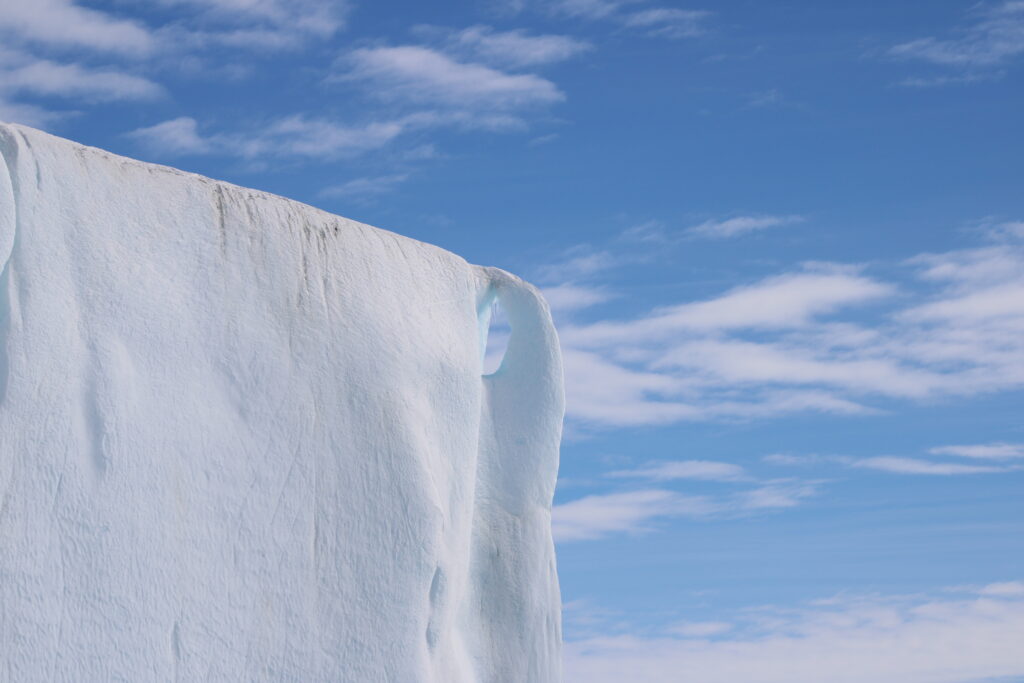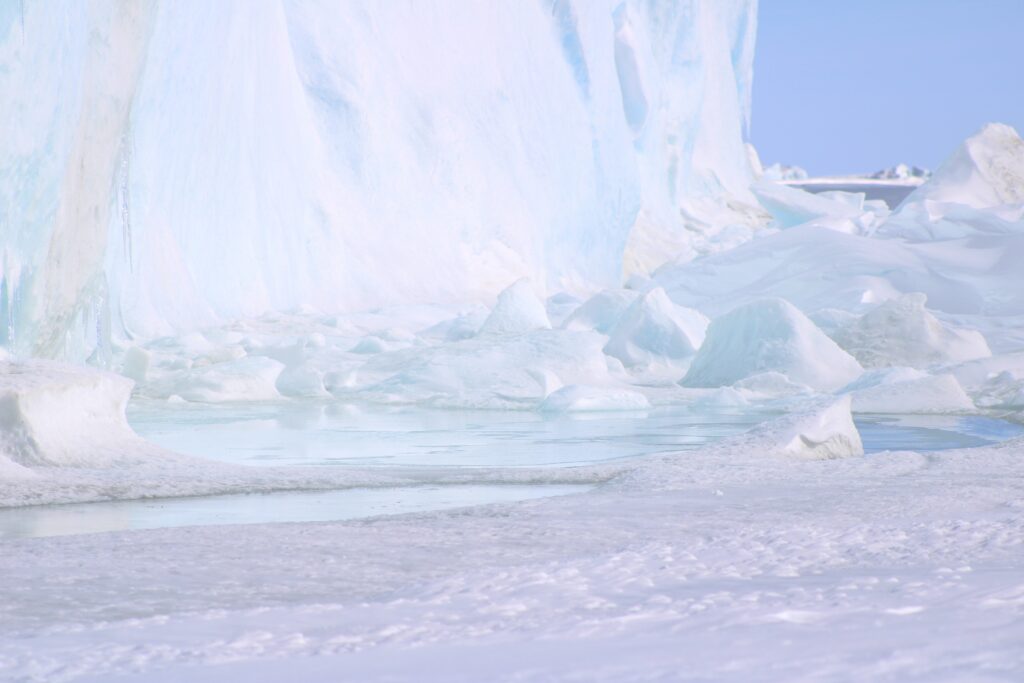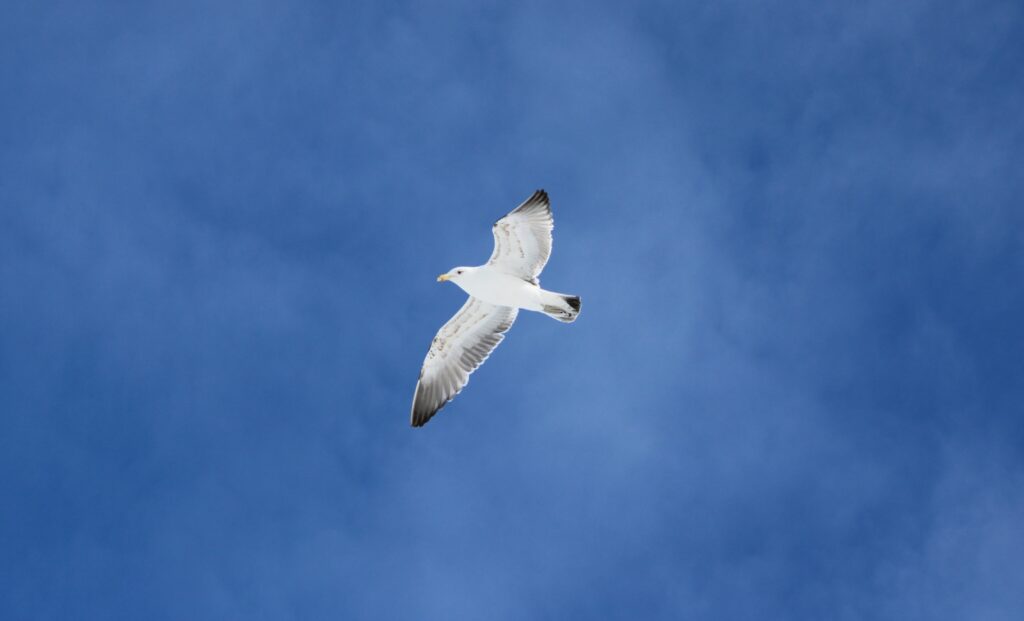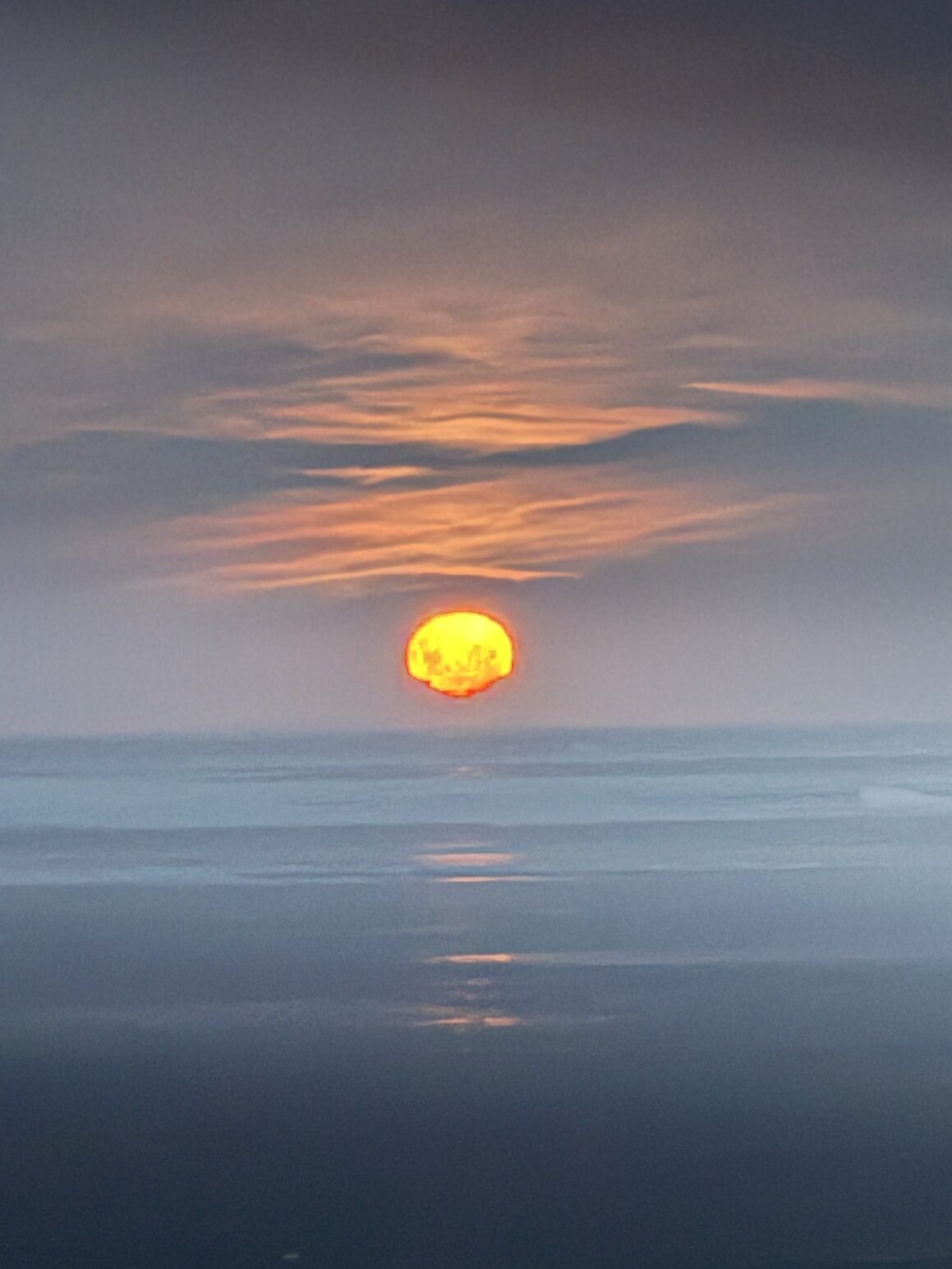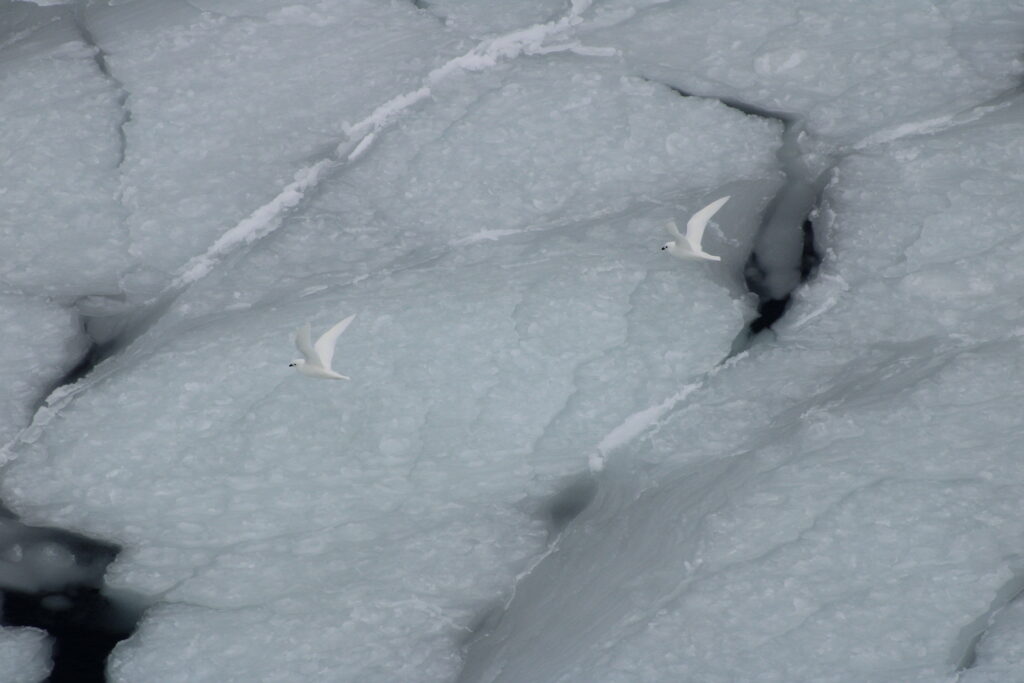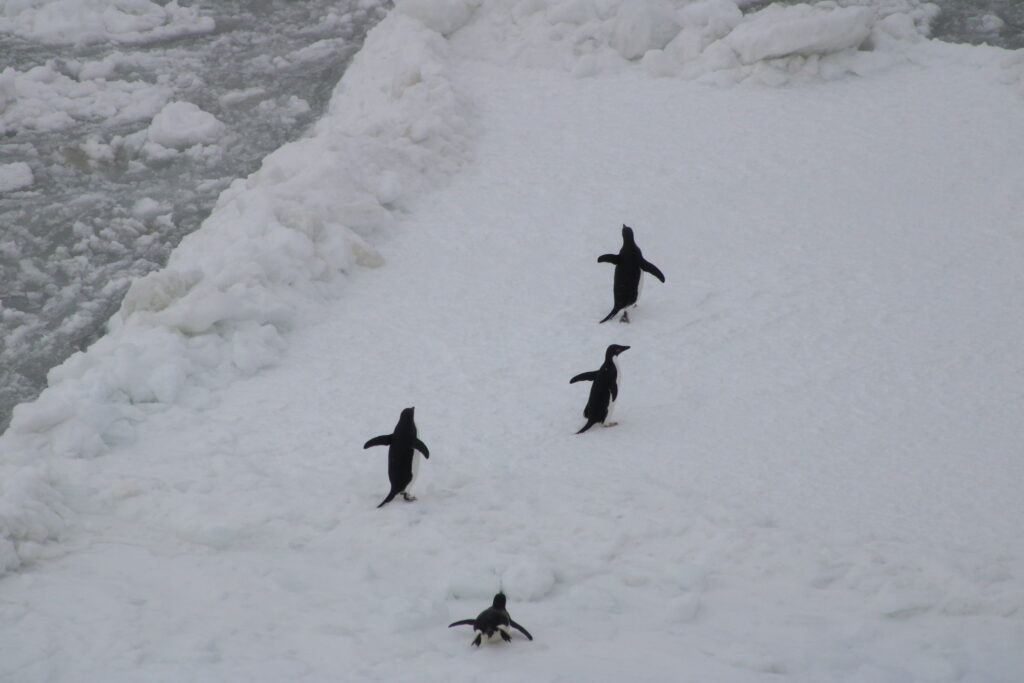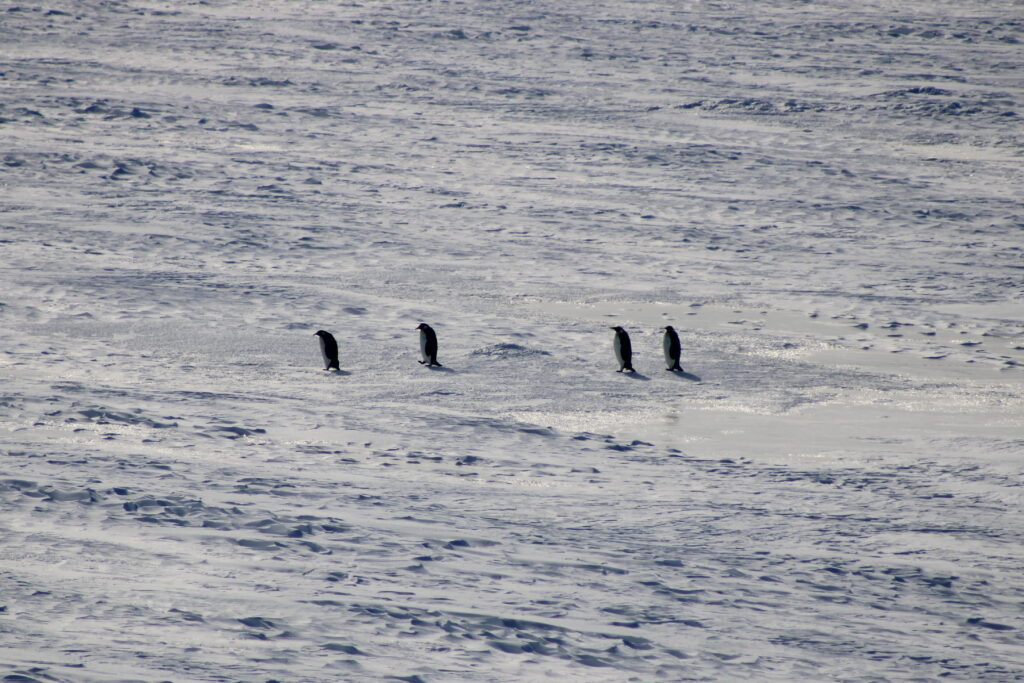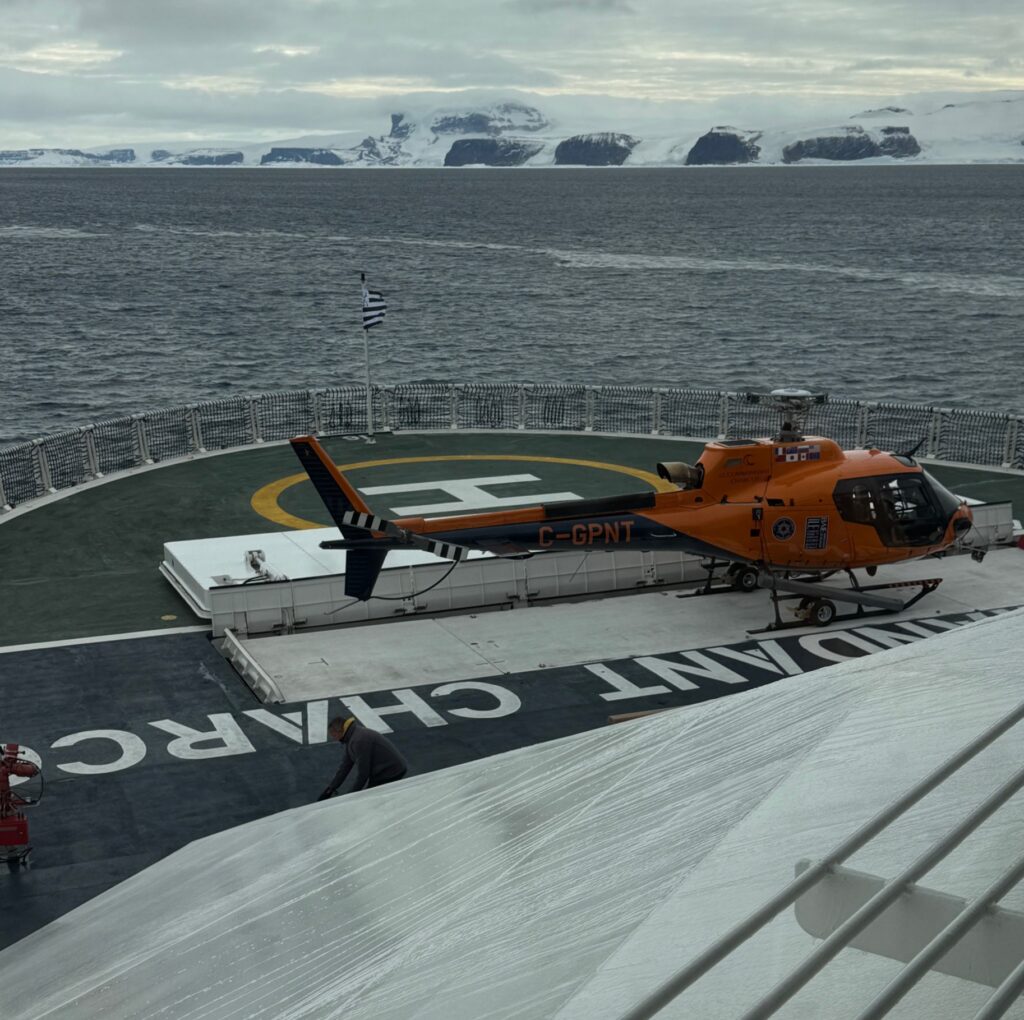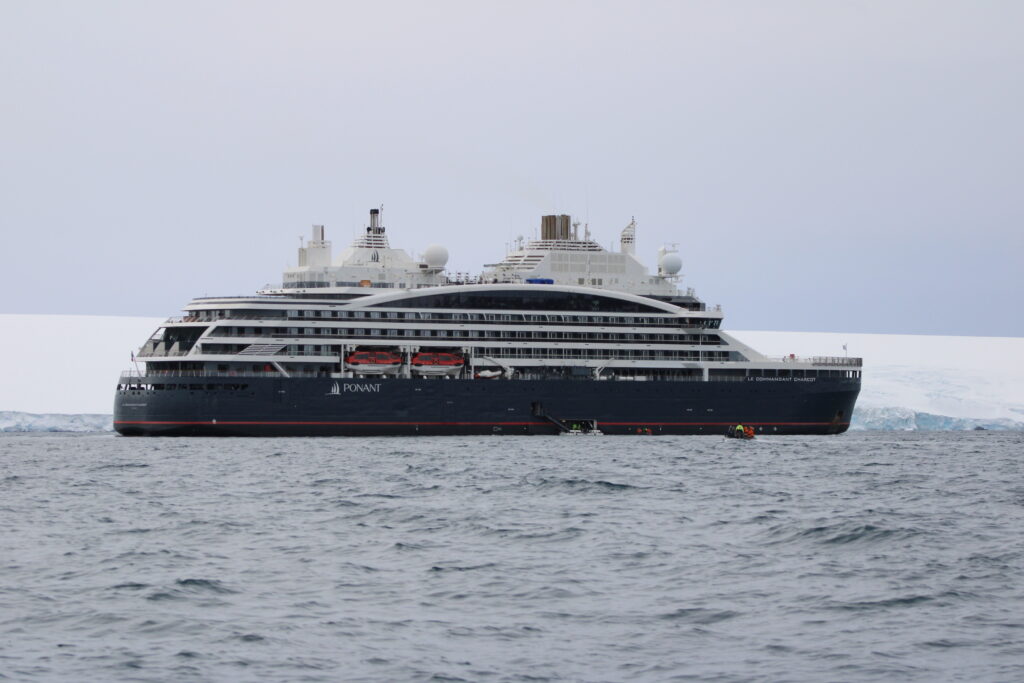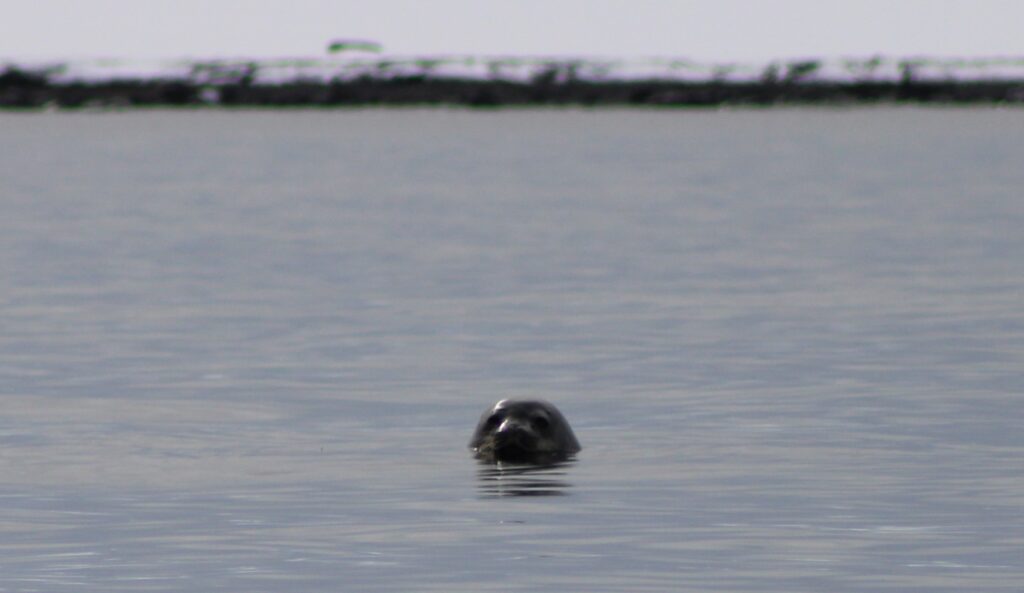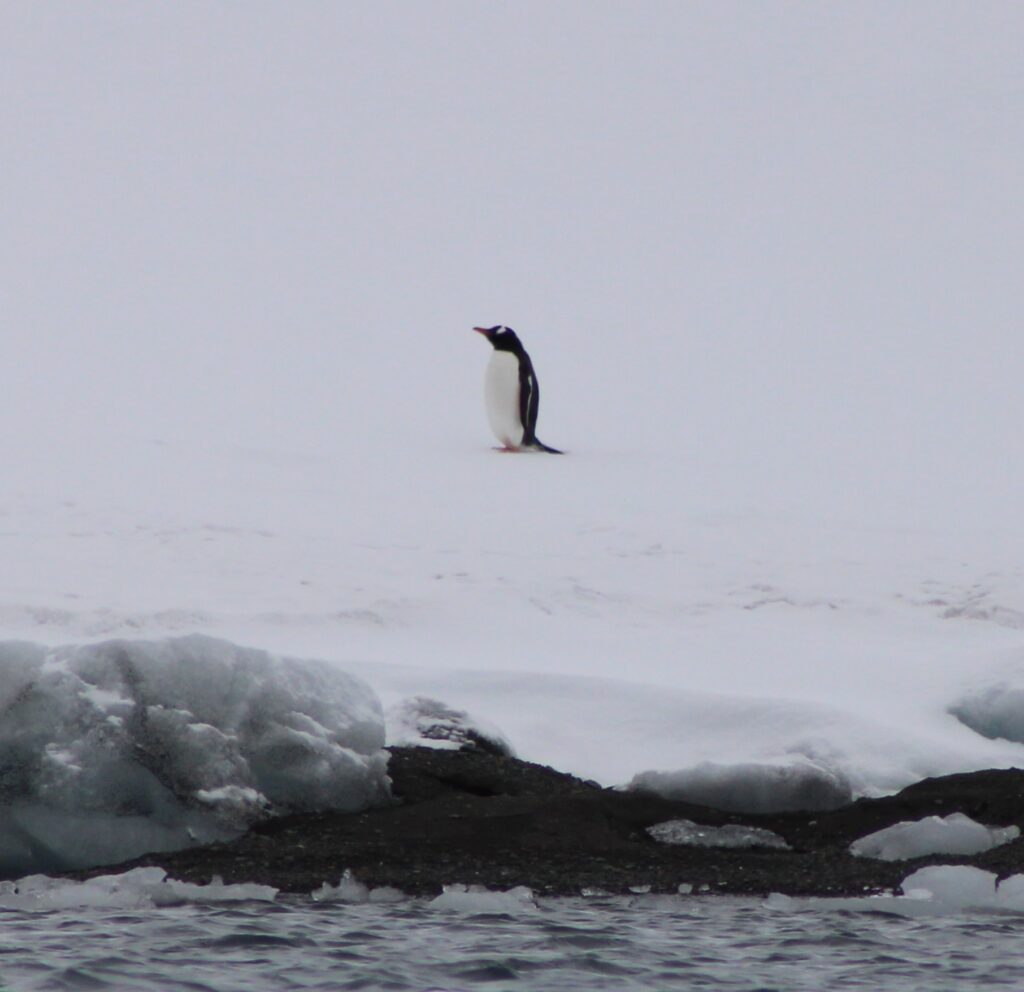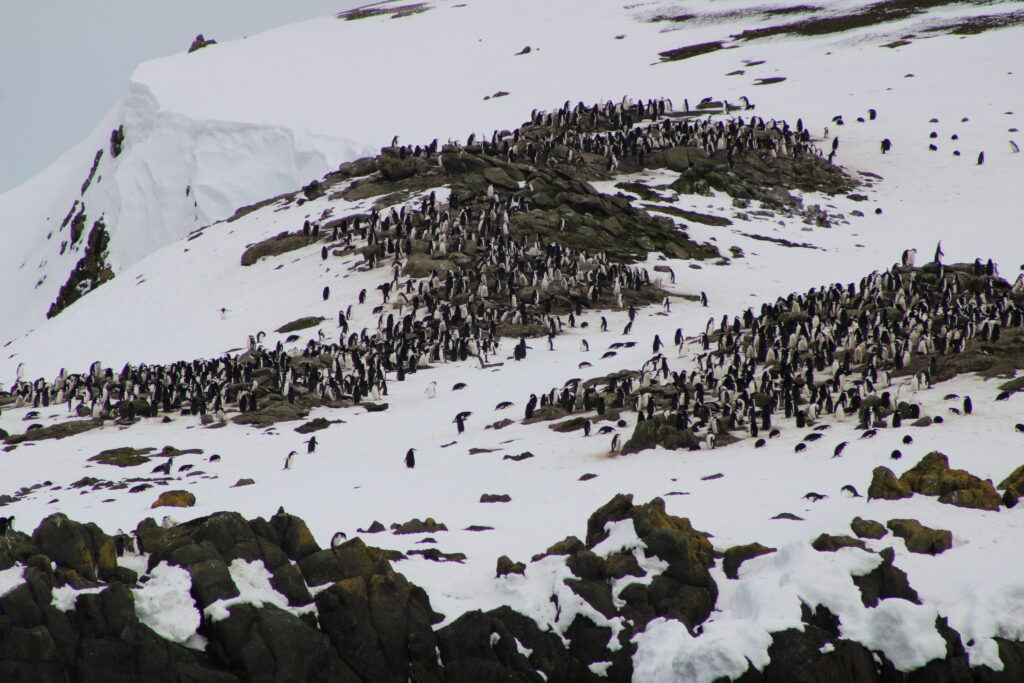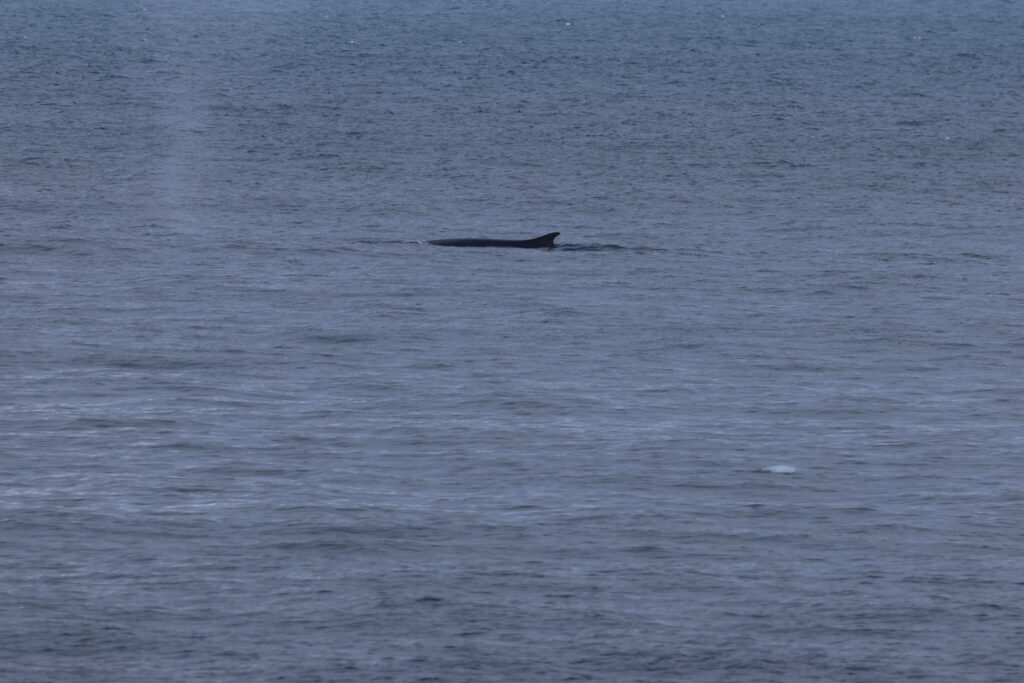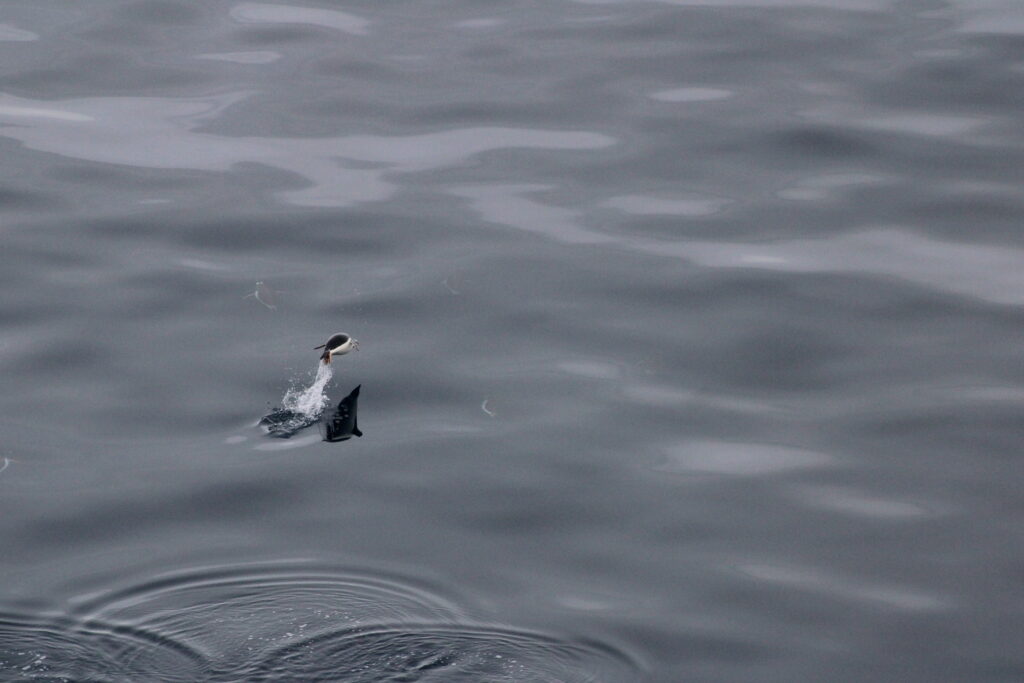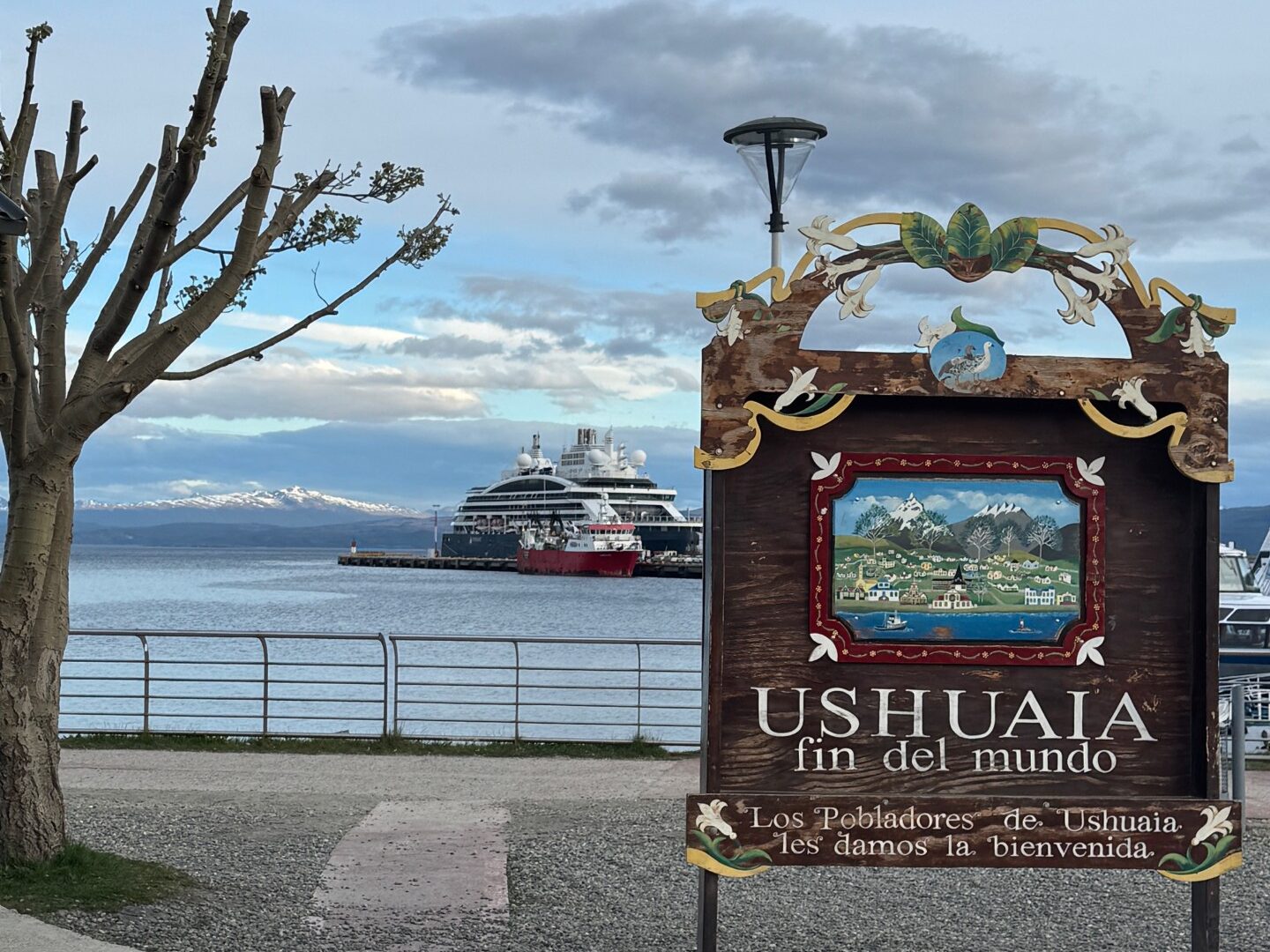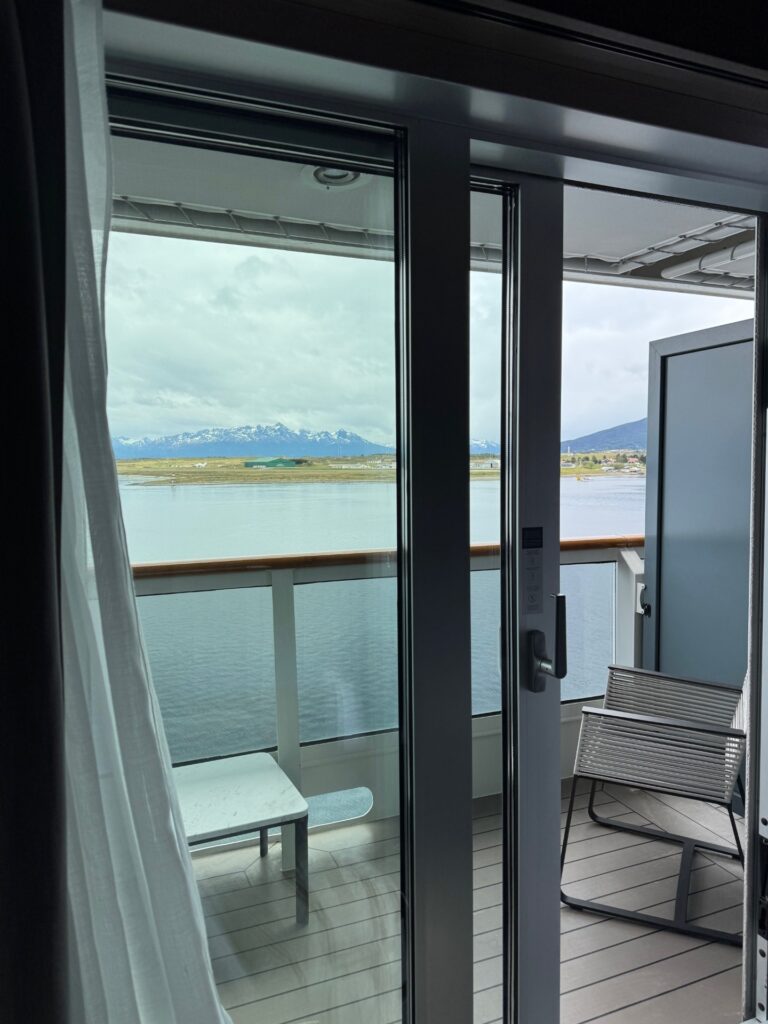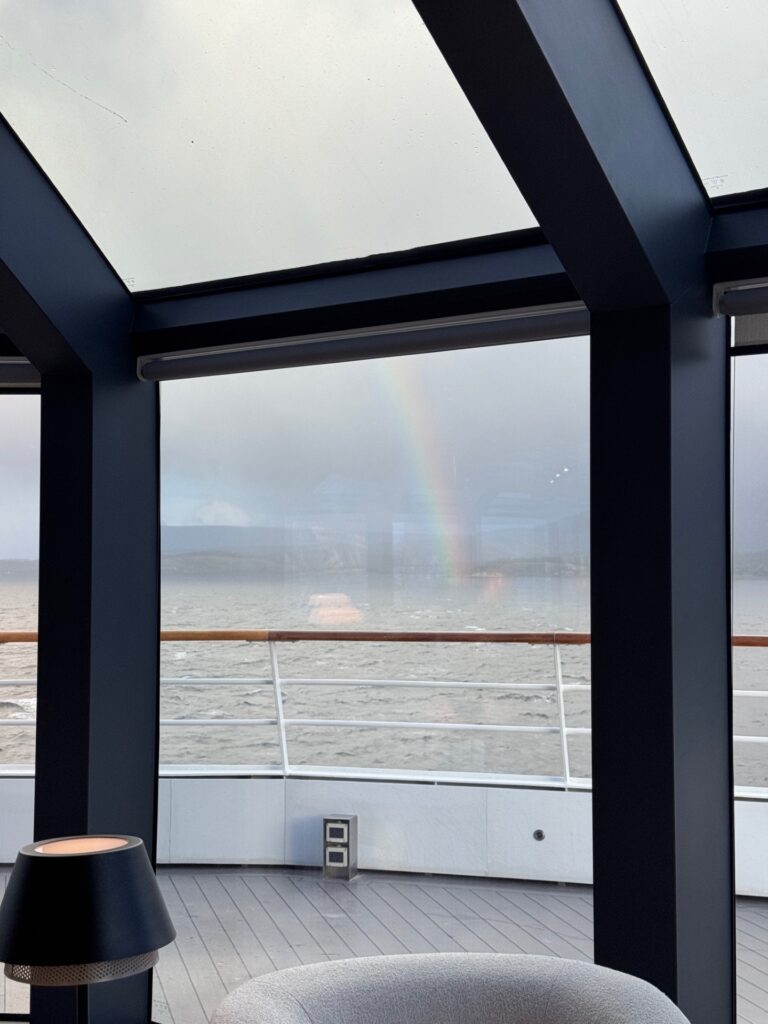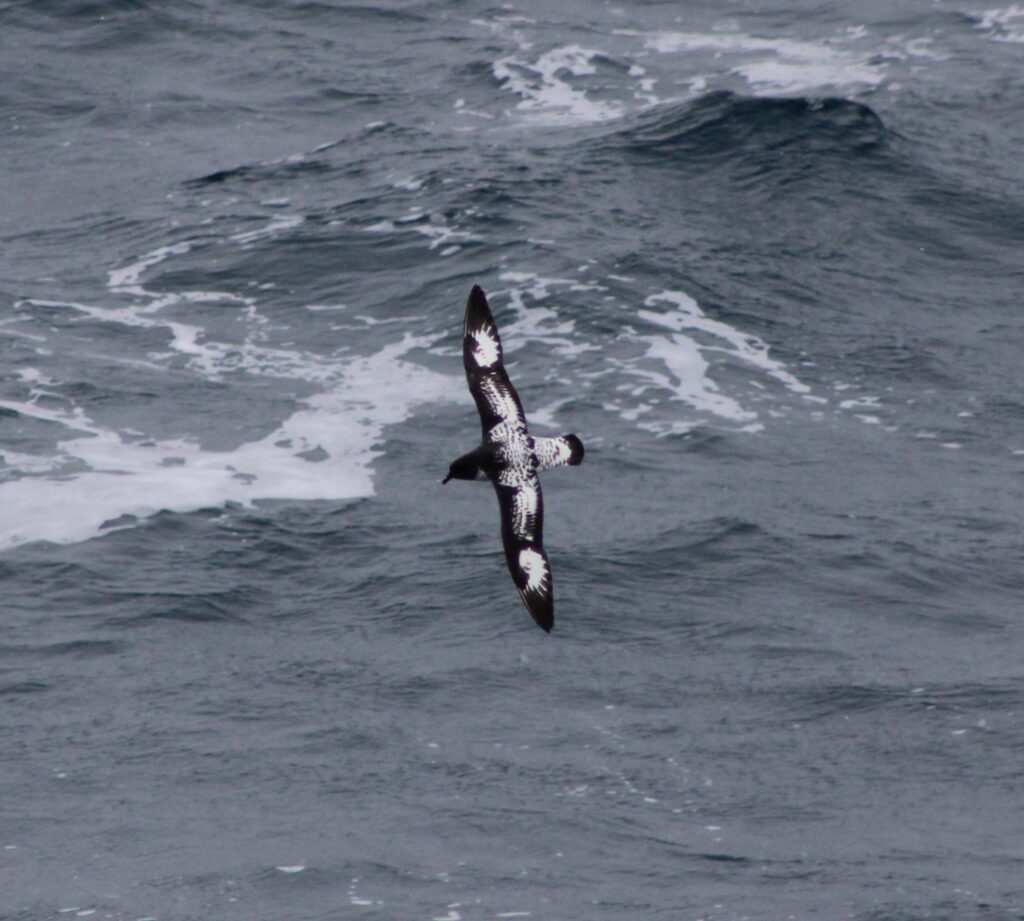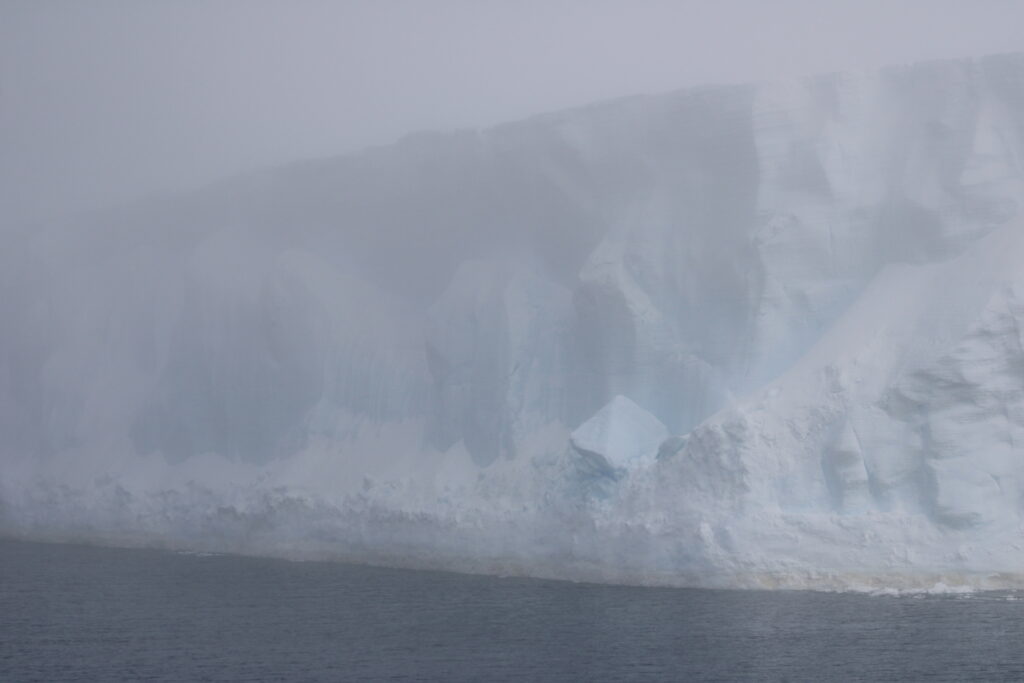
6 November, 2025 We were greeted by large pack ice floating by our window when we awoke in the morning. It was a foggy, cold morning, especially in contrast to the brilliant sunny day prior. Since we were transiting to the east side of Snow Hill Island, and northwest Weddell Sea, we hurried to do morning transects from the bridge. We were limited to 100-300m visibility with the fog and we again noticed few birds and no mammals as we sailed through the ice. We decided to head down to the 5th deck where we had access to view from the aft bridge to see if there was more activity where the water had been exposed by the passing of the ship. It wasn’t until we got closer to the open water, and passed a large iceberg eerily peaking through the fog in the distance, that we saw 5 leopard seals long, dinosaur-like heads breaking the surface of the water about 300m away from the boat.
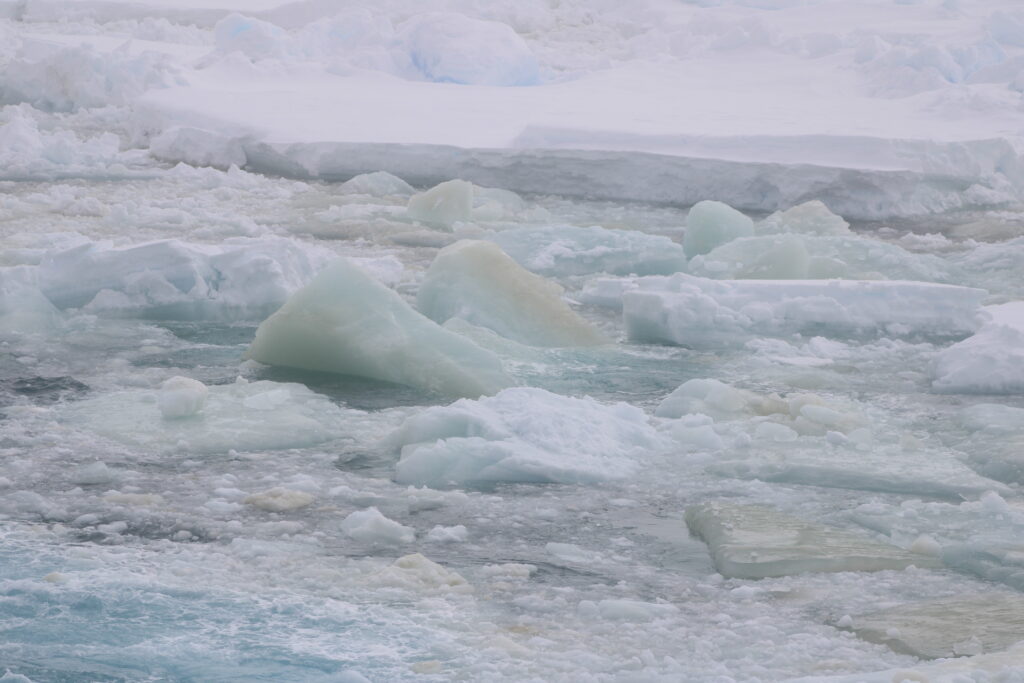
Photo: MariAnna Hinojosa
By midday, the sun was out and we had landed in fast ice. The helicopter crew went out to scout the ice and penguin colony. Based on their observations Captain Devorsine decided it would be best to find a new location to land for the day. A new, ideal location was found, and we landed for the rest of the day and overnight. Upon landing, an announcement was made to the passengers that “a group of 10 curious emperor penguins were making their way toward our ship” and we would commence group excursions. That was our cue to head to the gangway to prepare for a survey walk with the glaciologist while she measured a nearby grounded iceberg.

On our walking survey we saw the group of 10 emperor penguins, a curious (and noisy!) Adélie penguin, and several snow petrels. We often come across snow petrels near the icebergs as they flew out of nooks and holes in the ice. They prefer to roost in icebergs and cliffs near water but can also be found inland. We also observed, but did not approach closely or cross, two large cracks between the ice sheets. We suspected penguins were using these to leave the water since there were many footprints in the snow. Our suspicions were confirmed when we saw eight emperor penguins slipping out of the water onto the snow through the windows at the restaurant later that night. Unfortunately, but not surprisingly, no pinnipeds were seen and that was to be expected since we were so far from open water. The landscape could only be described as a snowy desert, and Renee even compared its likeness to the Sahara. Snow, ice, and icebergs everywhere in peaks, chunks, and valleys except for the occasional 1-2m crack in the ice sheet.
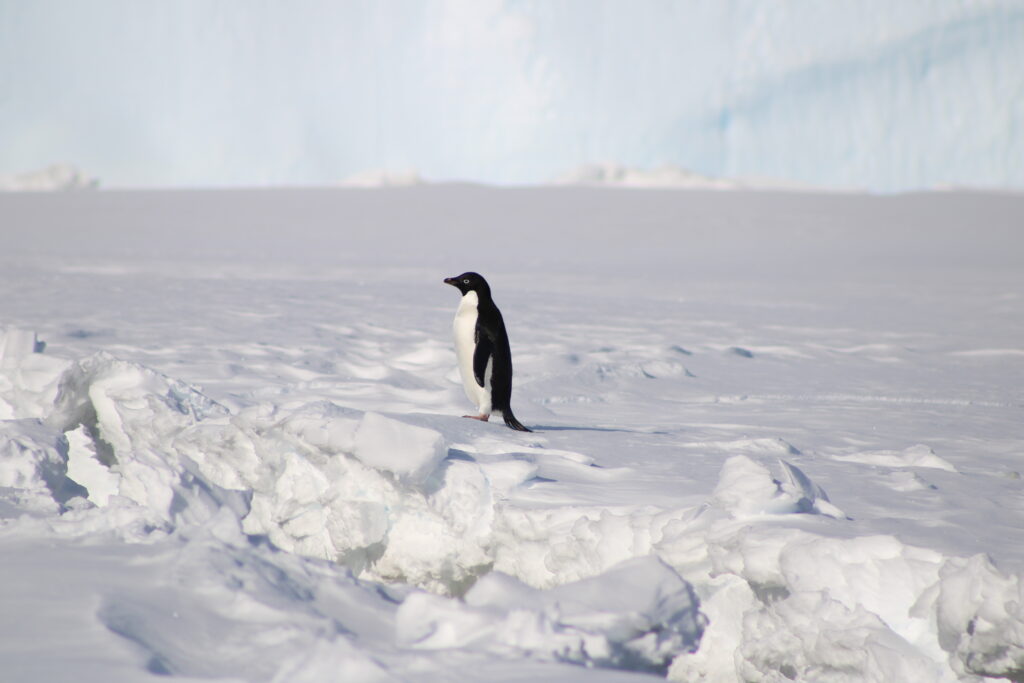

The most exciting finding of the day was brought to our attention by a naturalist near the vessel. As we approached the gangway she asked if we wanted to see some krill, and we enthusiastically jumped on the opportunity. The overturned ice from the ship entering the fast ice had brought up 4 or 5 individuals that were laying on the ice. We were very excited to get to see and photograph them!
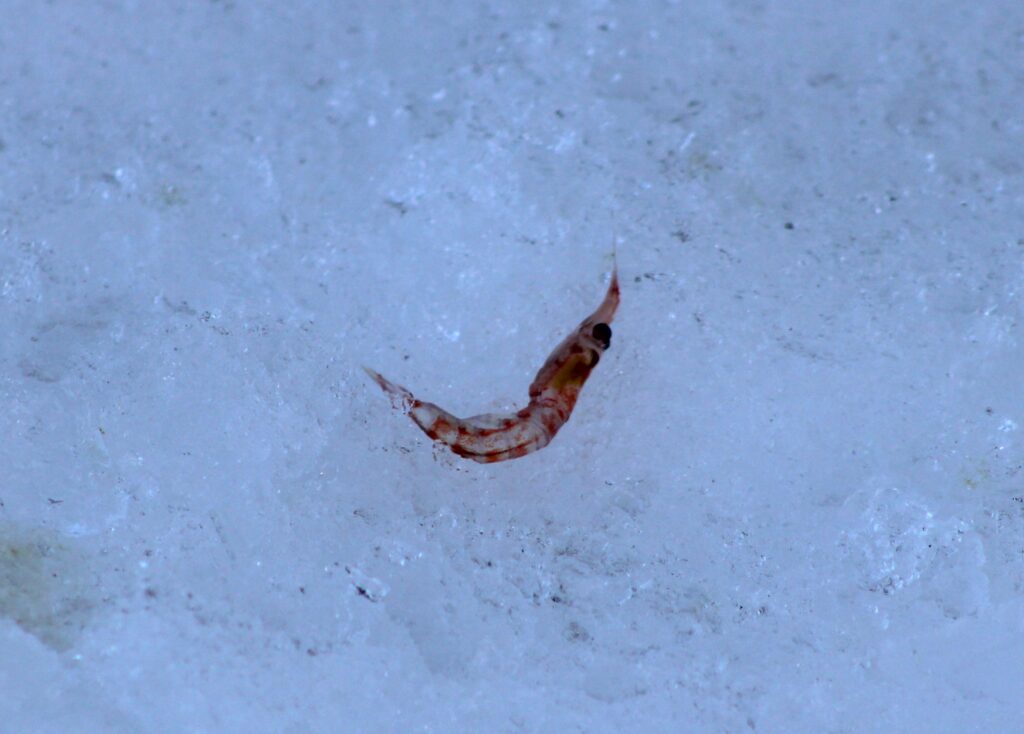
Once on board we prepared ourselves for the Officer’s Cocktail party with a dress code of white, black and white, or navy. We dressed in our finest and headed downstairs to enjoy a cocktail and small bites while chatting with passengers about the last few days’ adventures. We concluded the night with a spontaneously offered “Digestive Walk” out on the ice at 10:00pm and were in awe with the blues and purples of the icy landscape and the way the ship lights shone against the snow. MariAnna stepped into the “Parka Party” after the brief walk and enjoyed some warm mulled wine and a DJ spinning 70’s disco for several guests. Earlier in the day, MariAnna had met with a guest that asked to chat over coffee. She was interested in hearing more about the Adélie penguin foraging project MariAnna had worked on with graduate student, Suzie Winquist. Between surveys, zodiac excursions, and data management we try to engage with the guests. We do this through informal meetings and by attending events to both meet and interact with new guests and show our appreciation to the Cruise Director and Expedition Leader for their coordination efforts and enthusiasm in our participation.
